
Toddler FAQs | Everything You Need to Know About Our Montessori Toddler Program
In this FAQ, we answer some of the most common and important questions from toddler parents — from how we
During the first 3 years of life, your child develops more rapidly than at any other time. They have, what Montessori termed as, an “absorbent mind” that absorbs large amounts of information from the environment through observation and experiences. These are the years that lay the foundation for later learning—and the stronger the foundation, the more the child will be able to build upon it.
Our Toddler program offers a curriculum that emerges from each child’s unique skills and interests. Based on daily observations, guides introduce new materials and activities that pique curiosity and stimulate learning. Learning objectives for your child at this age include developing skills such as language, concentration, problem solving, visual discrimination, and physical coordination.
The routines of everyday living are the foundation of the Toddler program. Activities promote independence, order, coordination, and concentration, as well as support social, emotional, physical, and cognitive development.
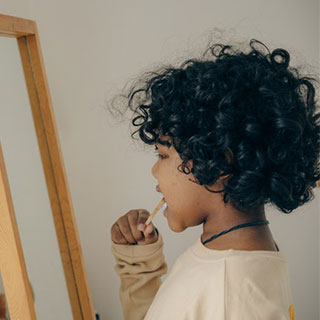
Washing, dressing, toileting, and eating, according to each child’s individual capacity

Cleaning, food preparation and food service; plant care and animal care
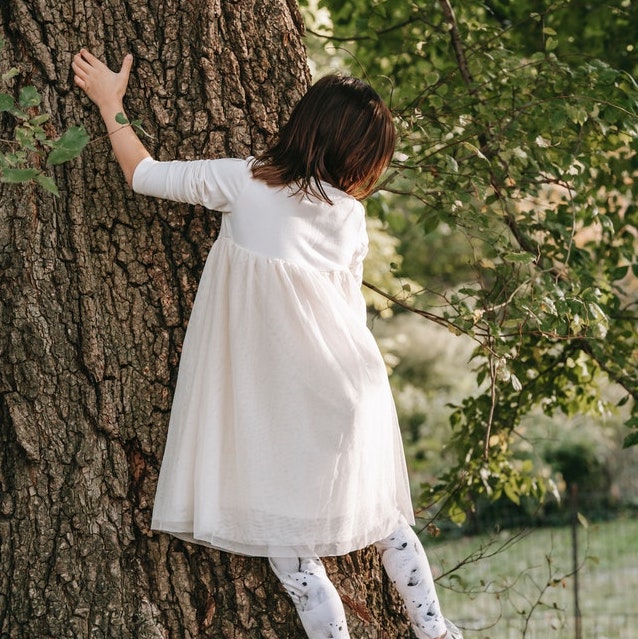
Walking, climbing, running, jumping, balancing, climbing steps, and more

Reaching, grasping, picking up objects, transferring objects, using tools and utensils, doing art work
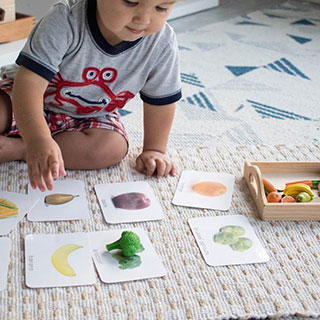
Naming objects, describing actions and intentions, discussing pictures, conversation, music, and singing

Developing social skills through interactions with peers, teachers, and adult-led small group games
We have compiled answers to questions parents of toddlers seeking enrollment ask us often. Before you read on, just know that we’re with you every step of the way.
We understand that trusting your child’s safety and development under someone else’s care is a big step for you as a parent. Equally important is your toddler’s need for independence and a safe, positive, healthy first-detachment experience. That is why we are extremely sensitive and careful while custom-designing the program for your toddler’s developmental needs.
Physical safety
First and foremost is your child’s physical safety. Toddlers are naturally curious and may not yet understand the concept of danger. While children are free to explore the carefully prepared environment designed to promote independence, they will always be in our field of vision and never be left unattended.
Other basic safety measures like inaccessible plug points, corner protectors for shelves, and regular sanitization of the environment and materials are taken care of.
The toddler environment is anchored by one internationally-certified Montessori Toddler guide (Ms. Seetha) and a trained assistant (Ms. Meena). The assistant is trained to be sensitive to the child’s needs, body boundaries, autonomy, and independence. When children walk out for outdoor play, one adult will accompany them to ensure their safety.
Emotional safety
Your child’s first experience of separating from you is a developmental necessity and one of the most critical milestones in their journey to become an individual. But does that mean it should be a traumatic experience? Certainly not. On the first day of your child’s educational journey, most schools force you to abandon their children at the school gate and leave. To learn more about why we are against this, please read our blog: Don’t abandon your child at school.
We are acutely sensitive and respectful of your child’s body boundaries and autonomy. We do not unnecessarily touch or lift them without their permission or intimation, except for safety reasons. Your child’s ‘No’ or the absence of an explicit response always means ‘No’ and will be respected in the environment.
In addition to training in psychological approaches to child development, presentation of intellectually appropriate materials, and how to use the principles of Montessori education to foster a hands-on, self-paced, collaborative, and joyful classroom, a certified guide is also trained in and equipped to handle practical matters like children’s mouthing of objects, immediate sterilizing and regular sanitization of materials and the environment, flinging of materials by children, setting healthy boundaries in a kind, firm and consistent manner, resolving interpersonal conflicts and adapt to the ever-changing needs and interests of the children while maintaining a calm and nurturing atmosphere.
Because toddlers, especially younger ones, need constant one-on-one attention, we maintain a low child-to-guide ratio of 1:3. We have a trained assistant present in addition to the lead guide.
The Toddler program runs from 8:30 a.m. to 11:30 a.m. Of course, your child is probably not going to stay for three hours on Day 1. Until they develop a trusting relationship with the guide and settle fully in the environment, the amount of time they spend here is totally up to them. As mentioned in the previously-linked blog post, one trusted adult must be present for the child until they develop the trust fully with the guide and are able to stay with them happily.
Children of this age typically focus on language and movement development. They choose activities based on their own interest and their current developmental need. The guide will observe and present advanced materials once they master a skill.
A typical day will have material work (language and fine motor development), outdoor play (gross motor development), watering plants (care of environment), food preparation and eating (community activities), hand washing (self-care), clean up (community work) and toilet learning (self-care).
Diapers are not allowed in the environment. If your child is still using diapers, we will work with you to help your child develop independence in the toileting process. We trust in the child’s intrinsic awareness of their own body signals and do not motivate them externally. We do not frequently take children to the restroom and ask them to try. We talk to parents and observe the child to understand their verbal and nonverbal cues, and when they express the need to visit, we take them to the restroom. Until your child develops trust with the guide for toilet visits, you will be taking them.
We approach the toilet training process with utmost sensitivity and care. We do not call unintentional soiling of pants as “accidents”. It is a natural part of the process towards toileting independence. We are well aware that the slightest facial gesture of disgust or unacceptance will negatively impact them. When done right with sensitivity, awareness, and a clear goal of the child’s independence and confidence, toilet training is a simple, joyful process.
Read more: Toilet Learning, Not Toilet Training: Honoring Your Child’s Natural Process
The child must bring a healthy snack from home. We trust in your child’s ability to identify the bodily sensation of hunger, and they are free to have their snack whenever they want to. We do not have a specific, common “snack time.”
Our Toddler environment gives your child the freedom to safely explore and learn through discovery. The setting is calm, inviting, and homelike, with soft rugs, books arrayed on low shelves and materials in baskets. Colors are muted, the atmosphere peaceful. The space is organized, clean, and uncluttered.
The classroom is a community in which respect for the independence and character of your child is paramount. Our guides are consistently calm, gentle, soft-spoken, patient, and trusting. They demonstrate respect and compassion by using eye contact, kneeling to the level of the child, addressing your children by name, and speaking before touching or directing them. The result is a calm, soothing atmosphere in which consistent guides create an emotional safe haven for those in their care.
Learning materials are easily accessible. These materials are designed to foster concentration, problem solving, and a sense of achievement. Children select the material that interests them, use it for as long as they would like, clean it up (with assistance when needed), and make another choice.
Equipment that supports gross and fine motor skills, such as low ladders with railings for children who are just learning to walk, are available for toddlers to try. Child-sized furniture, utensils, and other tools enable children to make independent choices and complete activities, which builds self-confidence, concentration, and critical thinking skills.
The materials go far beyond plastic squeak toys for chewing on and plastic blocks for banging together. Rather, they offer authentic and meaningful learning experiences.

Keeping a clean, orderly classroom is important in a Montessori environment. The practical life activities teach children how to take care of the space around them—from physically cleaning to, on a deeper level, appreciating one’s environment. When taken seriously and presented as an approachable, impactful challenge, these activities hold inherent dignity. These skills allow children to believe in themselves as well as develop the self-discipline needed for success throughout their lives.

Introducing a puzzle with more than one piece on the same base is a natural next step in the progression. When these puzzles include all three shapes, the activity allows for consistency from the single-shape puzzles first introduced. The skill isolation is related to shape. For three-shape puzzles including pieces that are all the same shape of varying sizes, the skill isolation is related to size discrimination.
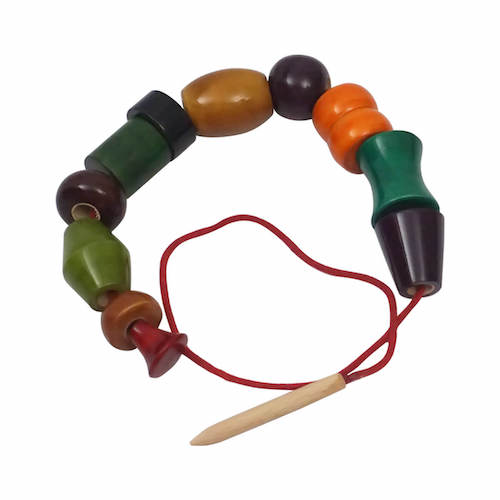
Threading beads activity is an excellent way to strengthen the finger muscles and their movement as they work together. It helps children develop fine motor skills essential for being able to pre-writing activities, buttoning the shirt, tie shoelaces, open containers, and more.
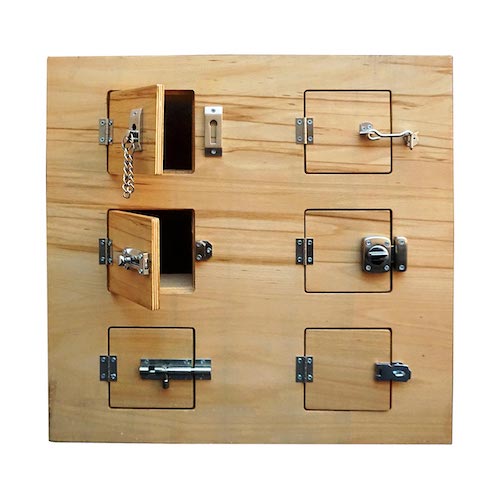
This provides them with an opportunity to use the pincer grip and wrist movement when opening the doors to discover miniature objects and wonderful surprises.
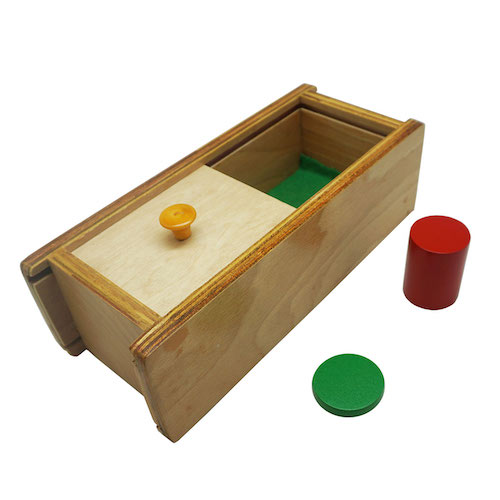
A box with 2 compartments and a sliding lid. The child places various objects in one or both compartments and slides the lid to cover or uncover them. This activity helps your child to work on hand and eye coordination, strengthen their wrist muscles, and develop the concept of object permanence.

In this FAQ, we answer some of the most common and important questions from toddler parents — from how we

A toddler’s first day of school is more than academics—it’s their first step into the world without you. An emotionally
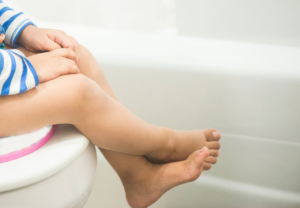
Toilet Learning is a significant milestone in a toddler’s journey toward independence. In our Montessori toddler program, we approach toilet

In most schools, on the first day, parents are forced to abandon their children at the school gate and leave.